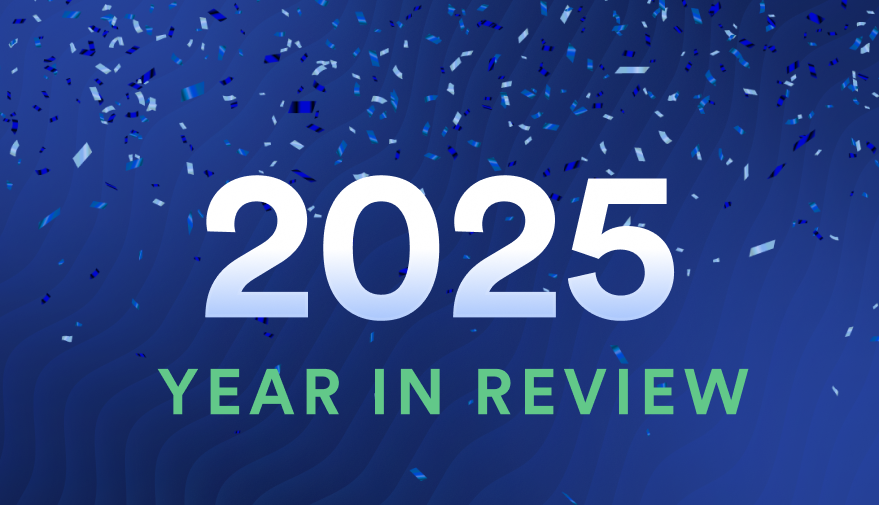Preventive vs Predictive Maintenance: Which Approach Works Best?

What’s the Difference Between Preventive and Predictive Maintenance?
Let’s start with a quick definition of each one.
What is Preventive Maintenance?
Also called Planned Preventive Maintenance (PPM), this approach is all about being proactive. You carry out maintenance tasks on a regular schedule, even if nothing seems wrong. Think oil changes, safety checks, filter replacements - routine things that help you avoid unexpected breakdowns.
For a deeper dive into PPM, take a look at our guide: What is Planned Preventive Maintenance?
What is Predictive Maintenance?
Predictive maintenance takes things a step further. Instead of working to a fixed schedule, you use data to monitor the condition of your equipment in real time. When the system spots something unusual, like higher vibration levels or rising temperatures, it sends an alert so you can intervene before a failure occurs.
Want to know how it works in practice? Read our article: What is Predictive Maintenance?
So, in simple terms:
- Preventive maintenance says: “Let’s fix things before they break.”
- Predictive maintenance says: “Let’s only fix things when they show signs they’re about to break.”
Both approaches aim to reduce downtime. They just go about it in different ways.

Why Maintenance Strategy Matters
Maintenance isn't just about fixing broken things. It's about keeping your entire operation running like clockwork. When done right, a smart maintenance strategy can help you:
- Increase asset lifespan
- Improve safety
- Reduce unplanned downtime
- Cut repair costs
- Stay compliant with regulations
- Keep customers happy
Whether you lean more towards preventive or predictive maintenance, your approach has a big impact on how efficient (or chaotic) things are day to day.
If you’ve ever had to firefight back-to-back breakdowns or juggle last-minute engineer callouts, you’ll know exactly what we mean. And if you haven’t, lucky you - but it’s best to stay ahead of the game.
When Preventive Maintenance Works Best
Let’s take a closer look at where preventive maintenance really shines.
You might already be using a PPM strategy without even realising it. For example, if your team:
- Services machines every three months
- Replaces components at set intervals
- Runs regular safety checks
- Uses calendars or software to manage scheduled jobs
This approach is especially useful when:
1. Equipment has a known lifespan
If your kit tends to wear out in predictable ways, scheduling checks makes a lot of sense. You can deal with parts before they fail and avoid unnecessary damage.
2. Health and safety are a priority
In industries where safety is non-negotiable, PPM helps ensure you're meeting legal requirements and keeping everyone safe.
3. You're managing lots of similar assets
Routine maintenance is easier to manage when you’ve got a fleet of similar machines or vehicles. You can set up a repeatable schedule and stick to it.
4. You don’t yet have real-time monitoring
Not every business has the budget or tech for predictive tools. PPM gives you structure and control, even without live data.
And the best part? With the right system in place, you don’t have to rely on spreadsheets or sticky notes to keep track of it all. Platforms like Service Geeni help you automate schedules, send reminders, and keep your team organised.
You can also take it up a notch with our guide to Maintenance Planning & Scheduling, which is packed with helpful tips. (Coming soon!)
When Predictive Maintenance Is the Better Choice
Now, let’s talk about predictive maintenance. It might sound more high-tech - and it is - but it’s not just for massive corporations or futuristic factories.
If you’ve got data, you’ve got potential.
Predictive maintenance uses sensors, machine learning, and other tools to spot patterns in your equipment behaviour. When something starts to look “off,” it triggers a heads-up, so you can fix the issue before it turns into a full-blown breakdown.
Here’s when predictive maintenance tends to work best:
1. Downtime is extremely costly
If every minute of machine downtime costs you money - or damages your reputation - then waiting for something to break isn’t an option.
2. You already have sensor data
Maybe your equipment is already generating performance data. Predictive maintenance puts that data to work, helping you make smarter decisions.
3. Your maintenance team is stretched
Predictive insights help your engineers focus their time where it’s really needed, instead of working through a checklist that might not be urgent.
4. You want to get ahead of issues before they escalate
Small warning signs can help you avoid big problems. That’s the real power of predictive maintenance - it gives you early warnings that help you act fast.
Service Geeni supports this approach too. By connecting your asset data with automated workflows, we help you move from reactive chaos to proactive control.
And if you’re trying to work out how predictive maintenance fits into a wider service contract, this post will help: Understanding Service Maintenance Contracts
Can You Combine Both Strategies?
Yes. And in fact, most forward-thinking businesses do exactly that.
This isn’t an all-or-nothing decision. In real-world service environments, you’ll often get the best results by blending both approaches. Here's how it might look in practice:
- You use preventive maintenance for legal checks, safety-critical systems, or assets with predictable wear.
- You layer in predictive maintenance for high-value equipment or systems where failure is harder to predict (or more expensive to fix).
- You track asset history and performance using your service management platform, so you know exactly what’s working, and what needs attention.
This combo gives you structure, flexibility, and control. And when you’re dealing with complex operations or specialist industries, that balance makes all the difference.
What About Unplanned Maintenance?
Let’s not forget the dark side of maintenance: the dreaded unplanned breakdown.
Unplanned maintenance is exactly what it sounds like. Something fails unexpectedly, and your team has to scramble to fix it. It's disruptive, expensive, and usually comes at the worst possible time.
The more preventive and predictive strategies you put in place, the less unplanned maintenance you’ll have to deal with.
Simple as that.
How Service Geeni Helps You Stay in Control
We know what it’s like to juggle engineers, equipment, service requests, and customer expectations - all while trying to keep costs down and operations running smoothly.
That’s why Service Geeni is built to make maintenance management easier. Whether you’re working with preventive plans, predictive data, or a healthy mix of both, we’ve got the tools to help you:
- Manage maintenance schedules in one simple platform
- Track asset performance and history over time
- Set up automated reminders and alerts
- Turn complex data into clear, useful insights
- Keep customers in the loop and engineers on task
We’re especially well-suited for service-led, asset-heavy industries where generic systems just don’t cut it. Our platform brings everything together in one place, so you can spend less time chasing information and more time making smart decisions.
If you're tired of jumping between systems or relying on guesswork, you're not alone. Service Geeni was designed for businesses just like yours - because we believe your maintenance tools should work as hard as you do.
Final Thoughts
So, which is better: preventive maintenance or predictive maintenance?
Here’s the honest answer.
Preventive maintenance is a great starting point if you need a structured, reliable way to keep equipment in check. It works well across most industries and is ideal when you’re managing similar assets or dealing with compliance requirements.
Predictive maintenance gives you the edge when you’ve got access to performance data and want to make smarter, faster decisions. It’s especially powerful in high-risk environments where downtime is costly.
But the real magic happens when you combine both. By tailoring your strategy to suit your assets and your goals, you get the best of both worlds: reliability, flexibility, and control.
And that’s exactly what Service Geeni helps you achieve.
Want to Simplify Your Maintenance Strategy?
Whether you're just getting started with PPM or exploring predictive tools, we’re here to help.
Let’s take the chaos out of your service operations.
Book a free demo and see Service Geeni in action.
More Resources from the Maintenance Hub
- What is Planned Preventive Maintenance?
- What is Predictive Maintenance?
- Understanding Service Maintenance Contracts
- Complete Guide to Maintenance Planning & Scheduling (Coming soon)
- What is Unplanned Maintenance? (Coming soon)
Download Full PDF
Read More…

Book Your Demo Today







